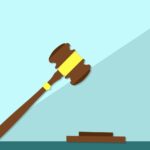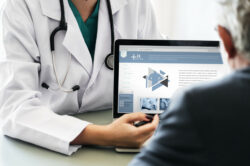Decoding Doctors’ Notes: Clarity and Strength in Medical Testimony
In the complex realm of medical practice, clear communication is paramount. The notes penned by physicians often serve as critical testimony in legal proceedings.
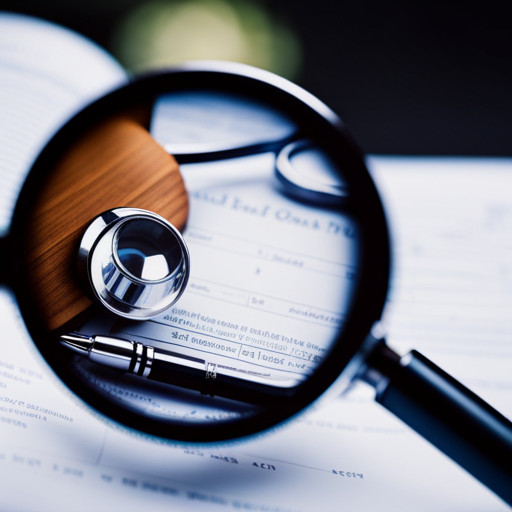
This article explores the nuances of decoding doctors' notes, the implications of medical jargon on patient communication, and the impact of these notes on legal outcomes.
It further delves into the challenges non-medical professionals face in interpreting these notes and potential strategies for enhancing doctor-patient communication.
Key Takeaways
- Medical testimony greatly influences legal outcomes by providing expert interpretation of medical facts and findings.
- Doctors' notes are crucial for patient interpretation and provide a comprehensive account of medical history, diagnoses, treatment plans, and recommendations.
- Efficient communication in patient interactions relies on appropriate use of clinical terminology, with a balance between accuracy, clarity, and depth of medical knowledge.
- Familiarity with common terms used in expert witnesses' statements aids interpretation of complex medical information in legal cases.
Understanding The Importance of Medical Testimony
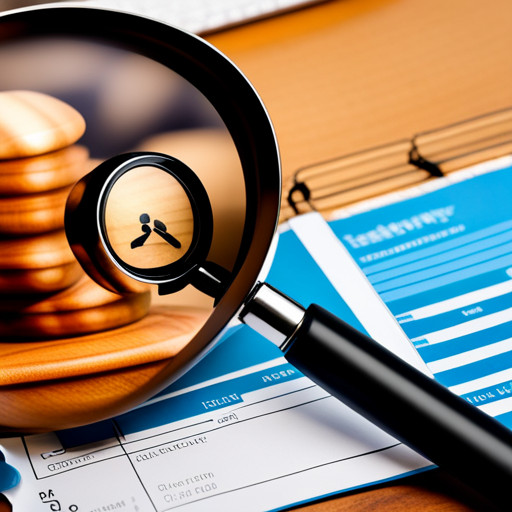
The role of medical testimony in legal proceedings is crucial, as it can greatly influence the outcome by providing expert interpretation of medical facts and findings. This evidence, often presented by a medical professional, serves as a vital link between the legal and medical sectors in interpreting and understanding medical complexities.
Testimony authenticity is paramount in this context. The credibility of a medical testimony depends on the accuracy of facts presented, the specialist's expertise, and their ability to convey complex medical concepts in a way that can be understood by individuals without medical backgrounds. Any discrepancy or inaccuracy in the testimony can not only mislead the proceedings but also compromise the integrity of the justice system.
Adherence to medical ethics is another crucial aspect. Medical professionals providing testimony must maintain an unbiased perspective, base their opinions on scientific evidence, and refrain from speculating beyond their area of expertise. They have a duty to maintain confidentiality, preserve the dignity of individuals involved, and uphold the highest standards of honesty and integrity.
The Basics of Reading Doctors’ Notes
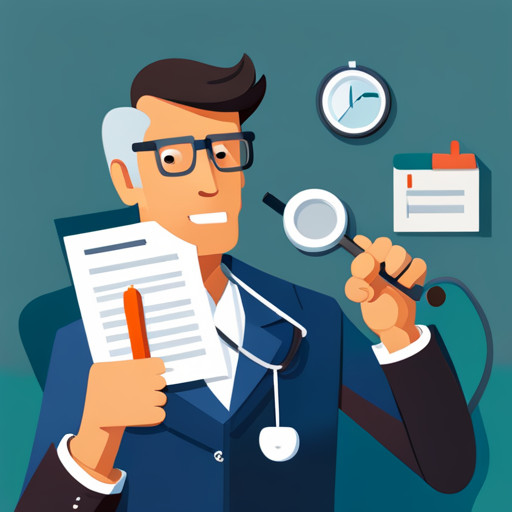
In the realm of medical documentation, several note-taking methods are employed by physicians. These methods not only facilitate the documentation process but also aid in delivering accurate and precise patient interpretation.
1. The SOAP method: This is an acronym which stands for Subjective, Objective, Assessment, and Plan. This method is widely used in clinical settings and provides a structured and easy-to-follow format.
2. The POMR method: This stands for Problem-Oriented Medical Record. This method focuses on the patient's problems and organizes the information accordingly.
3. The SOMR method: This stands for Source-Oriented Medical Record. This method organizes the information based on the source of the information, such as lab results or radiology reports.
These methods provide a systematic approach to capturing a patient's medical history, ensuring accuracy, clarity, and depth of medical knowledge. However, interpreting these notes requires familiarity with medical terminology, an understanding of the underlying physiological and pathological concepts, and the ability to integrate this knowledge to form a comprehensive understanding of the patient's healthcare narrative.
As such, this skill is of paramount importance in healthcare delivery and contributes significantly to the quality of care provided to patients.
The Role of Medical Jargon in Patient Communication
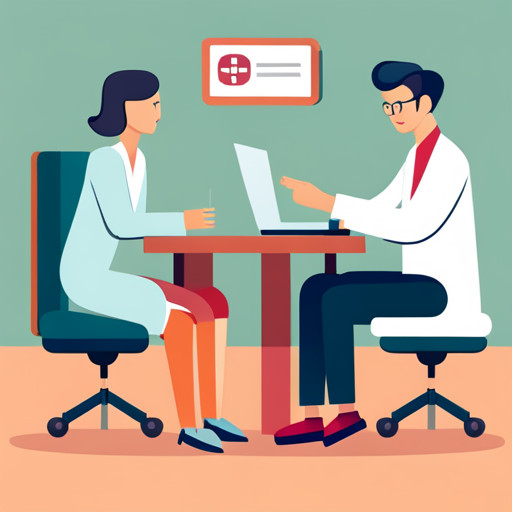
Efficient communication in patient interactions often hinges on the appropriate use of clinical terminology, also known as medical jargon. Over reliance on this specialized language, however, can lead to a phenomenon referred to as "Jargon Overload," which often results in "Patient Misinterpretation." This can create barriers for patients trying to understand their health conditions, treatment options, and the potential consequences of their medical decisions.
The table below illustrates three common medical terminologies, their standard definitions, and potential patient interpretations:
| Medical Term | Standard Definition | Potential Patient Interpretation |
|---|---|---|
| Myocardial infarction | A blockage of blood flow to the heart muscle | Heart attack |
| Benign neoplasm | A non-cancerous tumor | Harmless growth |
| Hypertension | Abnormally high blood pressure | High blood pressure |
Misinterpretation of clinical terminology can lead to confusion, anxiety, and potentially harmful health decisions. Therefore, it is essential for healthcare providers to ensure they use language that is easily understandable for their patients.
To counteract the Jargon Overload, healthcare providers are encouraged to utilize 'plain language' when communicating with patients. This does not mean oversimplifying complex medical processes, but rather translating them into terms that patients can comprehend and make informed decisions upon. Medical professionals must strike a balance between maintaining accuracy and clarity in their language, while ensuring depth of medical knowledge is not compromised.
Ultimately, efficient patient communication is about empowering patients with knowledge, enhancing their trust in the healthcare system, and fostering a collaborative relationship to improve health outcomes.
Deciphering Common Terms in Medical Testimony

Understanding medical testimony involves the decoding of three main categories of terms:
1. Anatomical Terminology: These are terms that describe body parts, regions, and directions. For instance, 'anterior' refers to the front of the body, while 'posterior' denotes the back.
2. Physiological Terminology: This includes terms that describe body functions. For example, 'cardiac' pertains to the heart, and 'neurological' relates to the nervous system.
3. Pathological Terminology: These are terms used to describe diseases and disorders. An 'oncologist', for instance, is a doctor specializing in cancer treatment.
Moreover, jargon, abbreviations, and acronyms are frequently used in medical testimony. Decoding these terms can be challenging, but necessary for the accurate interpretation of medical information.
The Power of Clear Medical Testimony in Legal Cases
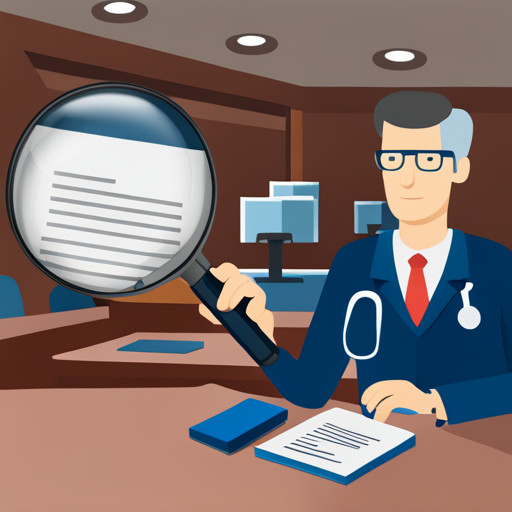
The role of clear and accurate medical testimony in legal proceedings cannot be underestimated, as it has a profound impact on the outcome of such cases. The credibility of the testimony significantly bolsters the strength of the case, making it compelling for the jury and the judge.
This discussion will delve into the correlation between the clarity and depth of medical knowledge expressed in the testimony and its influence on the legal outcome, as well as the enhancement of the credibility of the testimony itself.
Impact on Legal Outcomes
Understanding the impact of clear and strong medical testimony on legal outcomes necessitates careful analysis of key court cases and legal precedents. The link between legal jargon comprehension and successful litigation, particularly in cases involving complex medical issues, is undeniable. Note taking techniques also play a significant role in the process.
1. Legal Jargon Comprehension: A clear understanding of both legal and medical terminologies is crucial in presenting a compelling medical testimony. Lack of such comprehension can lead to misunderstandings, thus affecting the legal outcome.
2. Note Taking Techniques: Accurate and comprehensive notes reflect the depth of medical knowledge. They act as a reference point, aiding in the precise representation of medical facts.
3. Impact on Legal Outcomes: Clear medical testimony can sway a court's decision, highlighting its significance in legal proceedings. Understanding this relationship can influence the approach towards preparing for court cases.
Enhancing Testimony Credibility
Building upon the impact on legal outcomes, attention should now be turned towards enhancing the credibility of testimony. Testimony Training plays an integral role in this aspect. It equips medical professionals with the necessary skills to deliver precise, understandable, and convincing testimonies.
Moreover, the essence of Medical Ethics cannot be overemphasized. Adherence to these ethical principles fosters integrity, ensuring that the testimony provided is not only scientifically accurate but also morally sound. This, in turn, enhances the credibility of the testimony, making it more persuasive in the eyes of the court.
Challenges in Translating Medical Notes for Non-Medical Professionals
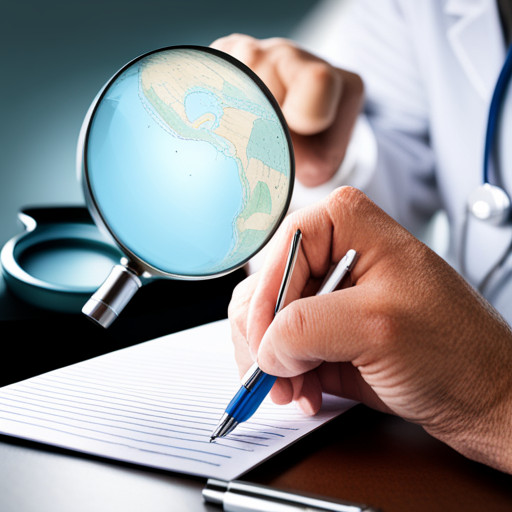
Challenges in translating medical notes for non-medical professionals often arise due to the complexity and specificity of medical terminology. This hurdle is further amplified by language barriers that exist in a global landscape. A comprehensive understanding of both medical and linguistic nuances is crucial to ensure the accurate translation of such critical information.
Three primary challenges can be identified in this process:
1. Complexity of Medical Terminology: The use of specific, technical terms that are unique to the medical field can pose a significant challenge to non-medical professionals. These terms can be difficult to understand and translate accurately, leading to potential misunderstanding or misinterpretation.
2. Language Barriers: In a multicultural and global context, language barriers often impede effective communication. Medical notes need to be translated into various languages, each with its own set of linguistic complexities. This challenge is exacerbated when dealing with languages that lack an equivalent term for a specific medical concept or procedure.
3. Lack of Standardization: Medical notes can vary greatly in format and style depending on the medical professional or institution. This lack of standardization can make it difficult to translate these notes consistently and accurately.
Technological solutions, however, have been leveraged to address these challenges. Tools like automated translation software and medical terminology databases can help non-medical professionals understand and translate medical notes accurately. These technological innovations have the potential to significantly improve the accuracy and efficiency of medical note translation, thereby facilitating better communication between medical professionals and non-medical stakeholders.
Case Studies: Impact of Doctor’s Notes on Legal Outcomes
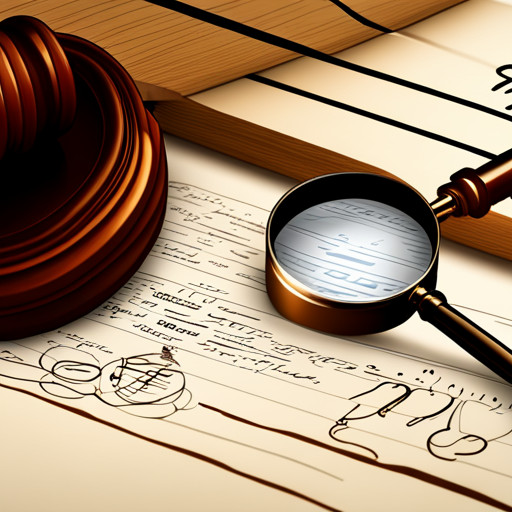
Understanding the implications of these notes, however, is not without its challenges. The inherent technical nature of medical language can create barriers to patient comprehension. Not fully understanding the contents of these notes can lead to testimony pitfalls, where misinterpretations or incomplete understanding of facts can undermine the reliability of the testimony.
The table below illustrates these potential pitfalls through three case studies, each highlighting a specific aspect of the doctor's notes and its implications.
| Case Study | Issue with Doctors' Notes | Legal Outcome |
| Case A | Inadequate documentation | Misinterpretation led to an unfavorable verdict |
| Case B | Technical language | Patient's lack of comprehension led to testimony pitfalls |
| Case C | Ambiguous terminologies | Lack of clarity resulted in a hung jury |
| Case D | Incomplete information | Led to a mistrial |
| Case E | Contradictory statements | Undermined the credibility of the case |
This table underscores the necessity of clear, concise, and comprehensive doctors' notes. It also highlights the need for effective communication strategies to ensure that non-medical professionals can understand and accurately interpret these notes. This could potentially mitigate the risk of testimony pitfalls and enhance patient comprehension, ultimately leading to more accurate and fair legal outcomes.
Improving Doctor-Patient Communication for Stronger Testimony

The exploration of strategies for enhancing communication skills between physicians and patients is a critical endeavor, particularly in the context of maximizing the impact of medical testimony in legal proceedings.
This discussion will delve into an analysis of the correlation between effective communication and the strength of medical testimony, highlighting the ways in which improved dialogue can contribute to more persuasive and influential testimonial outcomes.
Furthermore, the potential implications for medical practice and the broader healthcare system will be examined, establishing a comprehensive understanding of this multifaceted issue.
Enhancing Communication Skills
Enhancing communication skills is crucial for medical professionals, as it aids in providing clear and effective medical testimony. One aspect of this is verbal etiquette, which includes maintaining proper tone, using understandable language, and conveying empathy.
Another essential skill is active listening, which involves giving full attention to the patient, showing understanding, and providing appropriate responses.
To improve these skills, medical professionals can:
1. Participate in communication training workshops to enhance verbal etiquette.
2. Employ active listening techniques during patient interaction, such as reflecting and paraphrasing.
3. Seek feedback from patients and peers to identify areas for improvement.
Testimony Impact Maximization
Maximizing the impact of testimonies in the healthcare setting requires a focus on strategies such as precision, persuasiveness, and credibility. Testimony training plays a pivotal role in this regard, enhancing the ability of healthcare professionals to deliver clear, succinct, and influential testimonies. Emphasizing medical clarity can significantly augment the persuasiveness and credibility of testimonies, thus leading to more informed decision-making and improved patient outcomes.
The table below presents key elements of an effective testimony in a healthcare setting:
| Element | Description |
| Precision | Conveying information accurately and succinctly |
| Persuasiveness | Influencing the audience's perception or decision |
| Credibility | Establishing trust through expertise and consistency |
| Testimony Training | Enhancing skills for delivering impactful testimonies |
| Medical Clarity | Ensuring clear understanding of medical terms and concepts |
Frequently Asked Questions
How Can Patients Gain Access to Their Doctors’ Notes?
Access to doctors' notes can be facilitated through note transparency in healthcare systems. This transparency promotes patient empowerment by allowing individuals to familiarize themselves with their medical history and treatment plans.
It can be achieved through electronic health records, which offer easy accessibility and legibility. However, such access requires strict adherence to confidentiality rules and patient privacy regulations, ensuring that medical information is disclosed responsibly.
What Steps Are Being Taken to Simplify Medical Jargon for Better Patient Understanding?
Efforts to simplify medical jargon for enhanced patient comprehension include the development of Jargon Translation Apps and implementation of Patient Advocacy Initiatives. These methods are instrumental in translating complex medical terminologies into understandable language.
Evidence shows that such initiatives increase patient engagement in their healthcare journey, fostering better outcomes. Thus, these steps are pivotal in promoting patient-centred healthcare by bridging the communication gap between health professionals and patients.
How Does the Education Level of a Patient Affect Their Understanding of Medical Jargon?
The education level of a patient significantly influences comprehension of medical jargon. High educational attainment often correlates with improved patient literacy, thus better understanding of complex medical terminologies.
Conversely, individuals with lower education levels may face jargon barriers, hindering effective communication in medical settings. Therefore, the level of education serves as a critical determinant in the patient's capacity to understand, interpret, and respond to health information.
Can a Doctor Be Sued for Writing Misleading or Incorrect Information in Their Notes?
In the realm of healthcare provision, it is not uncommon for physicians to face malpractice consequences for penning misleading or erroneous information in medical notes. Ethical dilemmas inevitably arise from such actions, potentially leading to legal repercussions.
Accurate documentation is critical, serving as a testament to the physician's application of medical knowledge. Therefore, the veracity of such notes is paramount to avoid the slippery slope of malpractice lawsuits and uphold the integrity of the medical profession.
How Are Medical Professionals Trained to Write Clear and Concise Notes for Legal Cases?
Medical professionals undergo extensive training in note taking techniques and communication to ensure accurate, clear, and concise documentation of patient interactions.
This training includes understanding the importance of detail, clarity, and precision, particularly in the context of potential legal cases. It emphasizes the crucial role of their notes in providing a comprehensive, truthful account of patient treatment, thereby strengthening their medical testimony and mitigating potential legal liabilities.
Conclusion
In a realm where clarity and precision are paramount, the irony lies not in the complexity of medical jargon, but in its potential for misunderstanding among non-medical professionals.
Decoding doctors' notes and producing clear, cogent medical testimony can significantly impact legal outcomes, underscoring the need for improved doctor-patient communication.
The power of uncomplicated, accurate medical testimony not only illuminates complex medical concepts but also strengthens the credibility and reliability of the medical profession as a whole.

This post has been generated by AI and was not reviewed by editors. This is Not legal advice. Please consult with an attorney.
